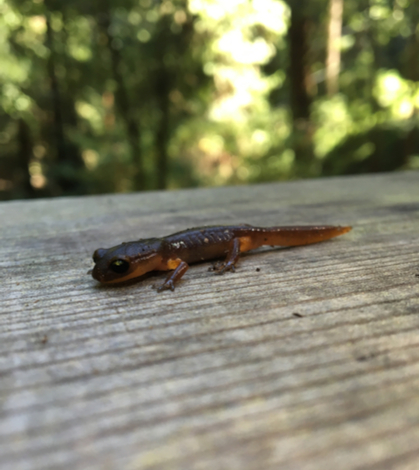In 2012 a petition was filed by the Center for Biological Diversity and Environmental Protection Information Center (EPIC) for the protection of the Shasta salamanders to determine if the species warranted Endangered Species Act protection. Then known as one species a discovery published last year revealed that the Shasta salamander in California is actually three species — each more endangered than previously thought though all three live in the vicinity of Shasta Lake.
The Center and EPIC scored a first-round victory for the three species last week when the United States District Court for the Northern District of California, San Francisco Division issued a new settlement that speeds up a decision by the U.S. Fish and Wildlife Service (FWS) on whether the animals warrant Endangered Species Act protection. The U.S. FWS now has April 30, 2021 to make that decision.
The new settlement has been prompted by plans to raise the height of Northern California’s Shasta Dam, which would result in flooding of the salamander’s habitat. Although work to raise Shasta Dam had stalled in recent years, after President Donald Trump was elected, the project gained renewed life.
After President Trump was elected he appointed former Westlands Water District lobbyist David Bernhardt as his deputy secretary of the U.S. Department of the Interior. In his current position Bernhardt oversees the U.S. Bureau of Reclamation, which is responsible for the Shasta Dam project, and Westlands has long advocated for raising Shasta Dam in order to provide more water for California agricultural operations.
“Endangered Species Act protection is essential to preventing the extinction of these unique salamanders,” said Jenny Loda, a Center biologist and attorney working to protect vulnerable amphibians and reptiles. “Renewed efforts to raise the level of Shasta dam would destroy the salamanders’ habitat, so they desperately need these lifesaving safeguards.”
In addition to direct flooding from the proposed increase in the size of the reservoir, the relocation or modification of the dam’s infrastructure which would be needed to accommodate the larger reservoir — such as buildings, roads, bridges and utility lines — will also likely trigger the disturbance and/or destruction of habitat for the now three species of Shasta salamanders and other rare species.
“Endangered Species Act protections would give the Shasta salamanders a real shot at survival,” said Tom Wheeler, executive director of EPIC. “With a near-perfect record at saving the species it protects from extinction, the Endangered Species Act is our best hope for keeping these rare creatures in the world.”
Congress allocated $20 million to the project in 2018 and preconstruction work started shortly afterward. In the interim, between the United States District Court’s ruling last week and the U.S. FWS’s April 30, 2021 ruling, the Bureau of Reclamation plans to award a construction contract in December 2019 and hopes to complete construction of the project by February 2024.
 California Water News Daily Your Source For Water News in California
California Water News Daily Your Source For Water News in California


